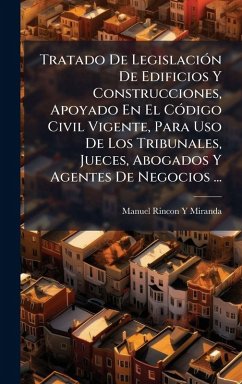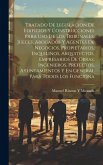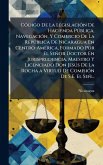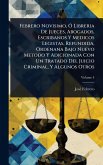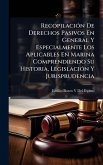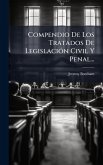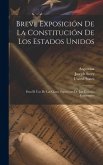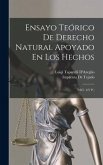Tratado De LegislaciÃ3n De Edificios Y Construcciones, written by Manuel Rincon Y Miranda and published in 1907, is a comprehensive legal treatise on building and construction legislation. The book provides detailed analysis and commentary on the existing Civil Code as it applies to buildings and construction projects. It is intended for use by tribunals, judges, lawyers, and business agents involved in real estate and construction matters. This historical legal text offers valuable insights into the legal framework governing construction and property rights at the turn of the 20th century in the Spanish-speaking world. Its enduring relevance lies in its thorough examination of legal principles and their practical application in the context of building and construction. This work has been selected by scholars as being culturally important, and is part of the knowledge base of civilization as we know it. This work was reproduced from the original artifact, and remains as true to the original work as possible. Therefore, you will see the original copyright references, library stamps (as most of these works have been housed in our most important libraries around the world), and other notations in the work. This work is in the public domain in the United States of America, and possibly other nations. Within the United States, you may freely copy and distribute this work, as no entity (individual or corporate) has a copyright on the body of the work. As a reproduction of a historical artifact, this work may contain missing or blurred pages, poor pictures, errant marks, etc. Scholars believe, and we concur, that this work is important enough to be preserved, reproduced, and made generally available to the public. We appreciate your support of the preservation process, and thank you for being an important part of keeping this knowledge alive and relevant.
Bitte wählen Sie Ihr Anliegen aus.
Rechnungen
Retourenschein anfordern
Bestellstatus
Storno

